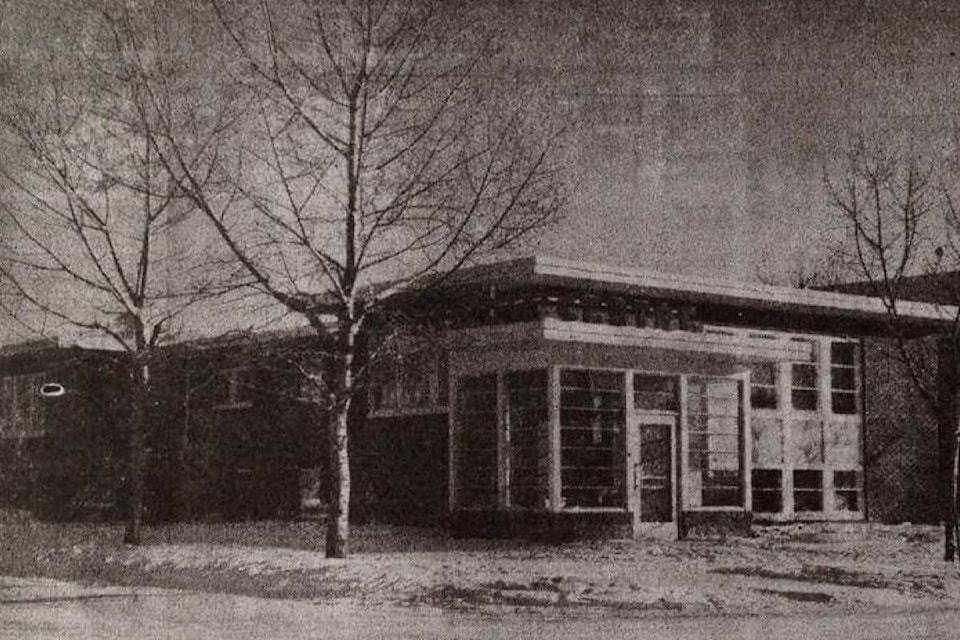By the 1950’s, Stettler’s hospital situation had evolved from private hospitals in the early days, which were located at various locations throughout the community over the years, to a nationally recognized municipal hospital that was a key factor in a rapidly expanding municipal district.
A new addition to the town’s medical services was introduced. The close proximity to the hospital was just one of the many details that may have seemed random but was a key part of the medical clinic’s design. Another example of the thoroughly planned design was the overall shape of the building, which was designed to waste zero space. The exterior was also specifically designed so that although the building has two floors, there are no exterior steps, to prevent slips and falls in adverse weather. This wasn’t just a design for the upper floor, but also the stairs at the north end of the building for patients leaving from the lower floor.
The main waiting room and office was equipped with a telephone switchboard capable of handling 10 phones. The building was also wired for an intercom system to aid in consultations and other conversations. This was a key part of the base intention to the clinic, which was to allow a patient to receive an in-depth diagnosis without having to move from one ward, or exam room to another. A sort of chute had also been built into the building to allow patients’ charts to be passed between the upper and lower floor. The clinic had 18 exam rooms, each of which was equipped with the most modern furnishings available. This included a light-based system to inform people of who occupied which room. A white light above the door would indicate a nurse was in the exam room, a red light would indicate a patient was in the room, and a blue light would announce a technician. Above the external lights were markers that would indicate which doctor was using that exam room at the time. The upper floor conference room, was located in the north east corner of the building, was a multi-use space that was employed for meetings, writing patient histories, and was even equipped with light boxes for examining X-rays.
Other features of the medical clinic were: one of the province’s best X-ray labs, as well as a laboratory on each floor, both of which were just as high-quality as everything else in the building. The patients were also provided with three private dressing rooms. The building was originally heated by oil but had been designed to switch to natural gas when the option became available. The furnace was housed in the same room as the hot water heating system, and the electrical center.
The medical clinic operated with roughly five doctors but could easily accommodate 10. The rest of the medical staff was comprised of three nurses, and two laboratory technicians. As for operational staff, the medical clinic employed a business manager, a switchboard operator, two stenographic secretaries, and three caretakers.
Carson Ellis writes a regular local history column for The Stettler Independent.
